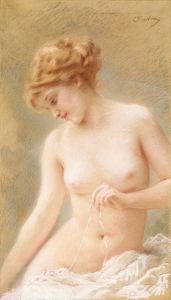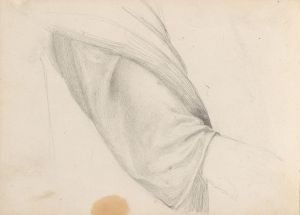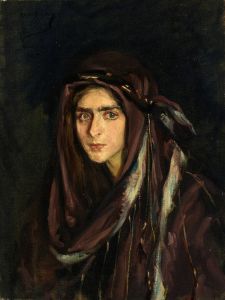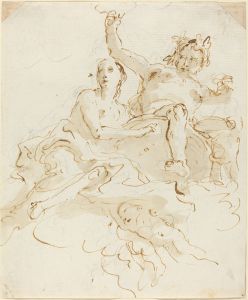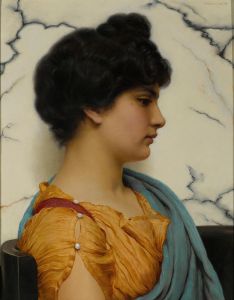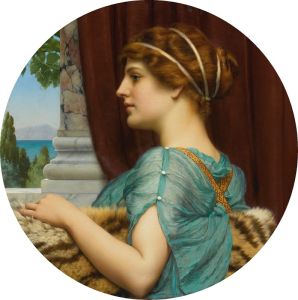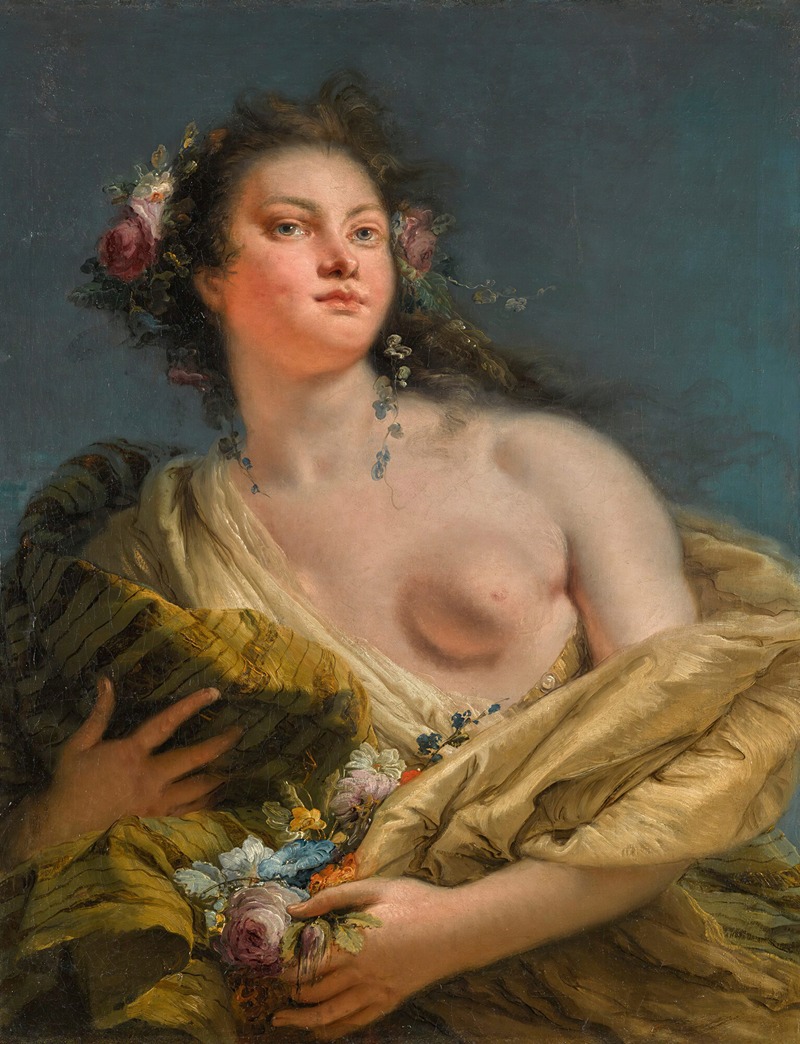
Portrait Of A Lady As Flora
A hand-painted replica of Giovanni Battista Tiepolo’s masterpiece Portrait Of A Lady As Flora, meticulously crafted by professional artists to capture the true essence of the original. Each piece is created with museum-quality canvas and rare mineral pigments, carefully painted by experienced artists with delicate brushstrokes and rich, layered colors to perfectly recreate the texture of the original artwork. Unlike machine-printed reproductions, this hand-painted version brings the painting to life, infused with the artist’s emotions and skill in every stroke. Whether for personal collection or home decoration, it instantly elevates the artistic atmosphere of any space.
Giovanni Battista Tiepolo's "Portrait of a Lady as Flora" is a notable example of the Venetian artist's work, showcasing his mastery in combining portraiture with allegorical themes. Tiepolo, a prominent figure in 18th-century Italian art, was renowned for his vibrant use of color, dynamic compositions, and the ability to infuse his works with a sense of grandeur and elegance. This particular painting exemplifies these qualities and reflects the Rococo style that Tiepolo is often associated with.
The painting depicts a woman dressed as Flora, the Roman goddess of flowers and the season of spring. Flora was a popular subject in art, symbolizing renewal, fertility, and the beauty of nature. Tiepolo's choice to portray a lady as Flora suggests an intertwining of portraiture with mythological and allegorical elements, a common practice in the Rococo period. This approach allowed artists to elevate their subjects by associating them with divine or mythological figures, thus enhancing their status and appeal.
In "Portrait of a Lady as Flora," Tiepolo employs his characteristic lightness of touch and a palette dominated by soft, luminous colors. The lady is adorned with flowers, which are intricately detailed and contribute to the overall sense of opulence and grace. Her attire is typical of the Rococo fashion, with flowing fabrics and delicate textures that Tiepolo captures with remarkable skill. The background is kept relatively simple, ensuring that the focus remains on the figure of Flora and the intricate details of her costume and floral adornments.
Tiepolo's ability to convey texture and light is evident in the way he renders the lady's skin, hair, and clothing. The subtle play of light across her face and the gentle shadows add depth and realism to the portrait, while the vibrant colors of the flowers and garments create a sense of vitality and movement. This combination of technical prowess and artistic imagination is a hallmark of Tiepolo's work and contributes to the enduring appeal of his paintings.
The identity of the lady portrayed in the painting remains unknown, as is often the case with allegorical portraits from this period. It is possible that she was a member of the Venetian nobility or a patron of the arts, but without definitive historical records, her identity remains a matter of speculation. Regardless of her identity, the painting stands as a testament to Tiepolo's skill in capturing the essence of his subjects while imbuing them with an air of timeless elegance.
"Portrait of a Lady as Flora" is housed in the collection of the Staatliche Museen in Berlin, where it continues to be admired by art enthusiasts and scholars alike. The painting is an excellent representation of Tiepolo's ability to blend portraiture with allegorical themes, creating works that are both visually stunning and rich in symbolic meaning. Through this painting, Tiepolo not only celebrates the beauty of his subject but also pays homage to the enduring allure of classical mythology and its place in the art and culture of his time.





